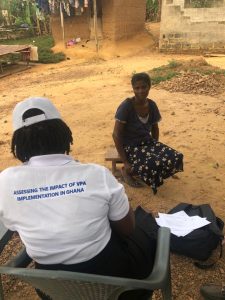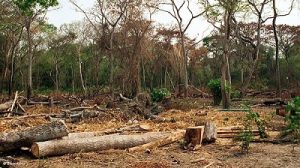Civic Response has trained 15 enumerators and 5 supervisors to carry out a VPA impact survey. The 4-day training workshop which took place in Accra in March 2021 aimed at equipping the data collectors with understanding of the questions to be administered, how to administer the questionnaires, how to administer the questionnaires using IT techniques and transmit responses to a central database.
The survey which was to collect baseline data on household income, domestic market timber prices and Voluntary Partnership Agreement (VPA) deliberative processes, took place in 4 Forest Window Districts(FWD) in Ghana. The FWDs are Goaso, Nkawie, Sefwi Wiawso and Akim Oda. These FWDs cover 23 administrative districts.
In 2009, Ghana signed a Voluntary Partnership Agreement (VPA) with the European Union (EU) to trade in legal timber in both the domestic and export market. Stakeholders acknowledged the fact that VPA implementation may have impacts on forestry, livelihoods and timber industry hence the need to collect baseline information to enable VPA impact assessment during the course of VPA implementation. Seven (7) VPA Impact areas were identified (i. Livelihoods, ii. Forest Conditions, iii. Forest Governance, iv. Market Performance, v. Forest Management, vi. Revenue Generation and vii. National VPA Multi Stakeholder Deliberative Processes) as the main areas to monitor the impact of VPA implementation. Civic Response in conjunction with ResourceTrust Network, under the auspices of the FAO-EU FLEGT Programme, committed to collecting baseline data for livelihoods, National VPA Multi Stakeholder Deliberative Processes and ratio of volume of legal timber to volume of illegal timber (including confiscated timber as “illegal” removals).
During the survey, baseline information was specifically collected on 6 livelihood indicators:
- income levels in forest fringe communities in FWDs
- amount of revenue delivered through the implementation of SRAs
- ratio of revenue disbursed by the Office of the Administrator of Stool Lands (OASL) to funds spent by district assemblies on development projects
- farmers are compensated according to market values
- number of registered employees in the formal timber industry in FWDs and
- average price of timber in local markets in selected window districts.
It is worth noting that with respect to SRA, the information is available in the Forestry Services Division Window District offices but there is the need to confirm what was actually paid by the timber right holders and what was actually received by the beneficiary communities.
Regarding revenue disbursed by OASL to District Assemblies, the information is available at OASL but funds spent by District Assemblies on development projects can only be assessed from the administrative districts and it’s not immediately available.

The objectives of the survey were to collect data on livelihoods (household income), verify SRA implementation- that is revenue from SRA paid by timber right holders and revenue received by the beneficiary communities as well as revenue disbursed by OASL to District Assemblies- and the amount spent by District Assemblies on development projects. The survey also aimed at collecting data on the number of registered employees in the formal timber industry in the FWDs, domestic timber prices and volume of illegal timber from the informal forest sector as well as collect data on the impact of the VPA deliberative process.
In terms of the survey design, the 2010 Population and Housing Census Sampling Frame from the Ghana Statistical Service was used. The sampling frame is simply demarcating the country into small parts called Enumeration Areas (EAs) for ease of collecting information. Two hundred and eighty-nine (289) EAs were identified from these 4 FWDs out of which a sample of 80 EAs was selected. The Ghana Census of Agriculture household lists for these 80 EAs were then collected from the Ghana Statistical Service (GSS). For each EA, 12 households were selected and it is from these households that data was collected.
The 20 data collectors were divided into 5 teams, each made up of 3 interviewers and a supervisor. Each person administered 3 livelihood questionnaires per day in face-to-face interviews in the local language. The supervisors supervised and reviewed the work of their team, ensuring completeness and consistency of data, correcting errors in the field, and carrying out call-backs to maximize response rate.
Computer Assisted Personal Interview (CAPI) -tablets – were also used for data collection. And data was synced to a central server by the enumerators during data collection. The survey took place in March and extended to the early part of April.
See More Pictures from the Training
Written by Belinda Boator




